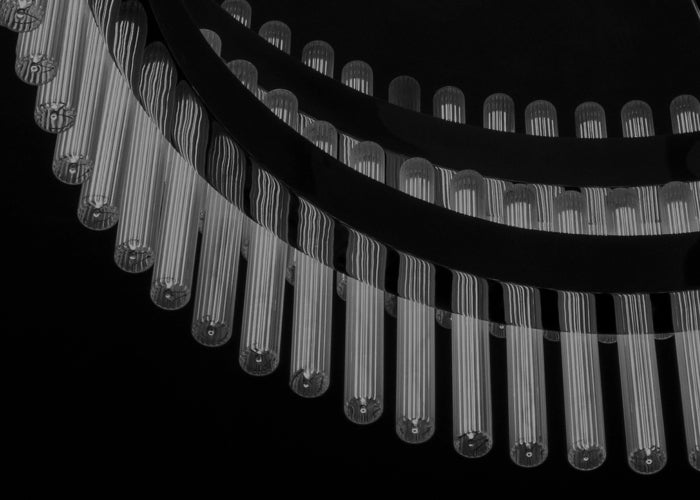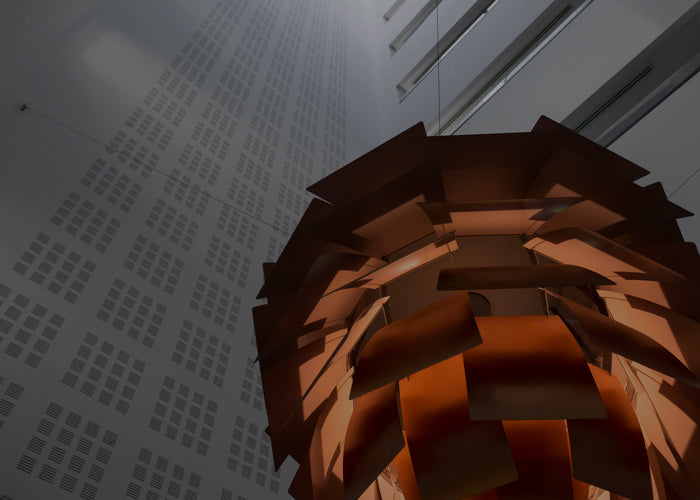What is a Table Lamp?
a. Functionality: The primary function of a table lamp is to provide localized illumination, typically used for reading, writing, working, or other activities that require a concentrated light source. They can also serve as decorative pieces or provide ambient lighting, enhancing the comfort of a room.
b. Design and Style: Table lamps come in various designs and styles to suit different décor themes and usage needs. Common designs include traditional wrought iron desk lamps, modern metal or plastic table lamps, vintage wooden table lamps, etc. Lampshade shapes and materials vary, ranging from round, square, conical to materials like glass, fabric, metal, etc.
c. Light Source: Table lamps can use different types of light sources, with the most common being incandescent bulbs and LED lights. While incandescent bulbs have traditionally been the most common choice, LED lights are becoming increasingly popular in modern table lamps due to their longer lifespan, higher energy efficiency, and a wider range of color temperature options.
d. Adjustability: Some modern table lamps come with dimming and color temperature adjustment features, allowing users to customize the brightness and color temperature of the light according to their needs, to suit different environments and activities.
e. Energy Efficiency and Environmental Friendliness: With the growing awareness of energy conservation and environmental protection, more table lamps are adopting LED light sources. LED lights consume less energy, have longer lifespans, reducing energy consumption and the frequency of lamp replacements.
In summary, table lamps are highly functional, come in diverse styles, and offer rich features, catering to various needs for localized illumination and decoration.

Why Use a Table Lamp?
a. Provides Localized Illumination: Table lamps offer concentrated light to tables or specific areas, facilitating activities like reading, writing, painting, or crafting that require focused attention.
b. Comfort: Compared to general lighting, table lamps provide softer and warmer light, creating a more comfortable and cozy atmosphere, aiding relaxation and enhancing work or study efficiency.
c. Energy Efficiency: Many modern table lamps use LED light sources, which consume less energy and have longer lifespans compared to traditional incandescent bulbs, contributing to energy savings and reduced carbon emissions.
d. Decorative Purpose: Table lamps not only serve as functional lighting fixtures but can also be part of interior decoration. Various beautifully designed table lamps can enhance the aesthetics of a room, complementing the interior décor style.
e. Flexibility: Compared to fixed ceiling or wall-mounted main lighting fixtures, table lamps offer more flexibility. Users can easily move and adjust the position of table lamps as needed to meet different lighting requirements for different times and occasions.
In conclusion, table lamps are suitable for various spaces where localized illumination or creating a cozy atmosphere is needed. They are widely used in homes, offices, and other places to fulfill different lighting and decorative needs.

Types of Table Lamps
Table lamps come in various types, mainly categorized based on their design, functionality, and purpose. Here are some common types of table lamps:
- a. Task Table Lamps: Brightness adjustment and flexible lamp head, suitable for tasks like reading, writing, or painting.
- b. Decorative Table Lamps: Focus on aesthetic design, using various materials and shapes. Serve both as lighting and interior décor pieces.
- c. Night Lights: Provide soft illumination, often used in bedrooms or hallways for night lighting.
- d. Touch Control Table Lamps: Feature touch controls for power, brightness, and color temperature, convenient for bedrooms and living rooms.
- e. LED Table Lamps: Eco-friendly option with high efficiency, long lifespan, brightness and color adjustment.
- f. Rechargeable Table Lamps: Built-in batteries with USB charging, portable for outdoor camping or travel.
- g. Eye-Care Table Lamps: Use soft lighting and optical design to reduce eye fatigue, suitable for long reading or working sessions.
- h. Adjustable Table Lamps: Allow adjustments of lamp head angle, brightness, and color temperature for flexible use.
The above are some common types of table lamps. Users can choose the appropriate type based on their specific design, functionality, and usage requirements.

Spaces Suitable for Table Lamp Usage
- a. Living Room: Provide soft localized lighting for reading, TV, chatting, also decorative pieces.
- b. Bedroom: Commonly placed on bedside tables for reading, resting, or ambient lighting.
- c. Study/Office: Focused lighting for tasks like reading, writing, painting.
- d. Student Dormitories: Essential for studying and personal activities.
- e. Hallways/Entrances: Soft lighting to illuminate pathways without glare.
- f. Children's Rooms: Provide soft light for sleeping or nighttime reading.
- g. Dining Room: Create a cozy dining atmosphere while providing illumination.
- h. Leisure Areas: Suitable for sofas, coffee tables, or reading corners.
In summary, table lamps are suitable for various spaces requiring localized illumination or cozy ambiance.

How to Choose the Right Table Lamp?
- a. Lighting Needs: Define whether you need it for reading, working, or ambiance.
- b. Style and Design: Match the lamp with the room’s décor style and color scheme.
- c. Light Source Type: Choose between incandescent, LED, etc. (LED is more efficient and long-lasting).
- d. Lampshade Material: Fabric, glass, metal, etc. affect light diffusion and ambiance.
- e. Features: Brightness adjustment, color temperature control, timers, etc.
- f. Size and Placement: Ensure the lamp fits the desk or table space properly.
- g. Price and Quality: Consider reputable brands or quality products for durability.
In conclusion, choosing the right table lamp requires considering lighting needs, style, source type, features, size, and quality to ensure suitability.

Tips for Purchasing
- Accurately measure the space and plan installation position and lamp size.
- Develop an overall lighting plan to enhance space brightness and comfort.
- Choose lamp types that complement décor style and furnishings to enhance ambiance.








